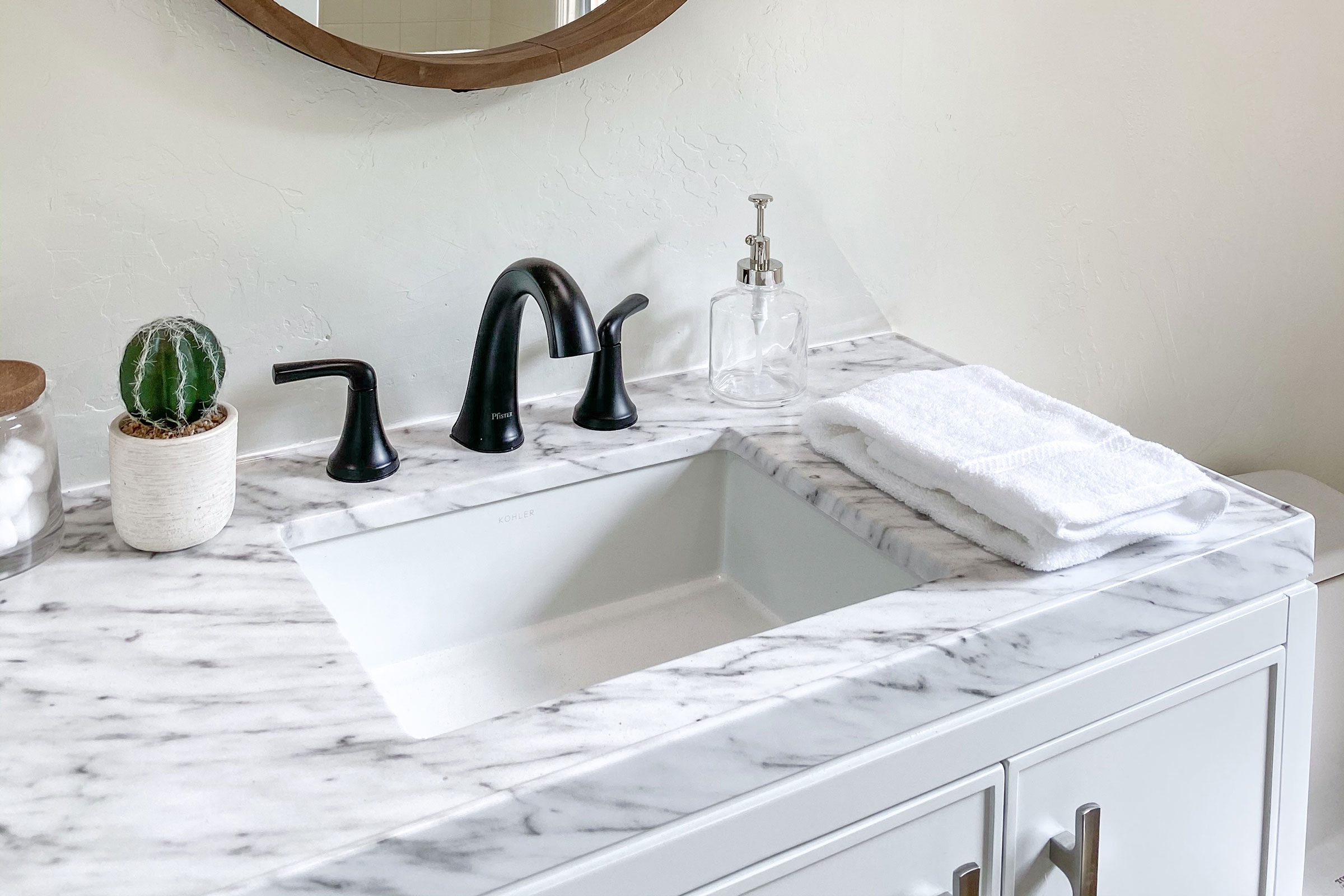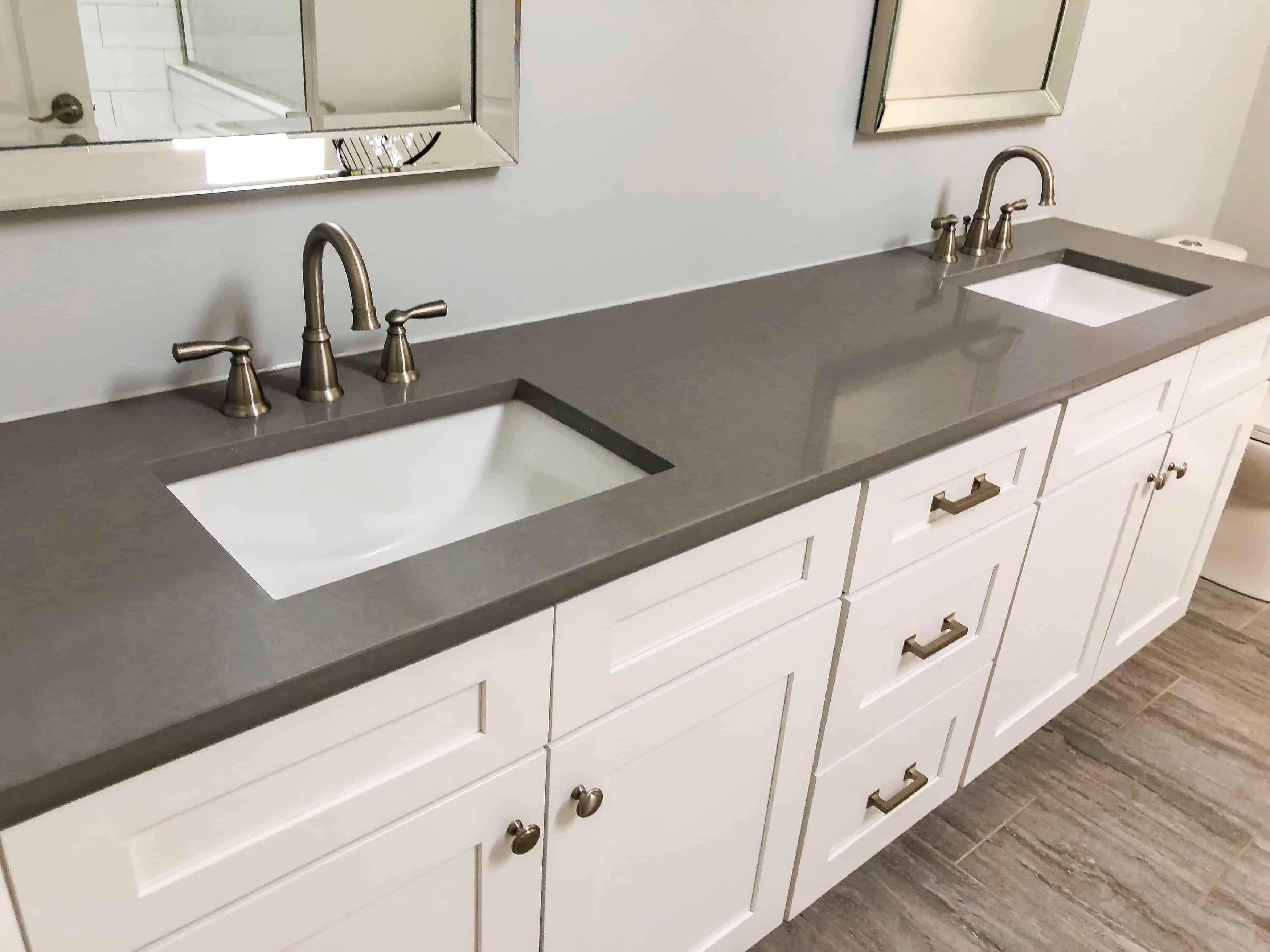Material Properties and Characteristics

Marble and quartz are popular choices for bathroom countertops and flooring, each offering distinct advantages and disadvantages. Understanding their properties and characteristics is crucial for making an informed decision.
Durability, Scratch Resistance, and Stain Resistance
The durability, scratch resistance, and stain resistance of marble and quartz are key factors to consider. Marble, a natural stone, is known for its beauty but is more susceptible to scratches and stains compared to quartz. Quartz, an engineered stone, is more resistant to scratches and stains due to its non-porous nature.
- Marble: Marble is a porous material, meaning it has tiny holes that can absorb liquids. This makes it susceptible to staining, especially from acidic substances like wine, juice, and cleaning products. It is also relatively soft, making it prone to scratches from sharp objects. However, with proper care and sealing, marble can be durable and beautiful.
- Quartz: Quartz is a non-porous material, making it highly resistant to stains and scratches. It is also very durable and can withstand heavy use. However, it is important to note that quartz is not completely scratch-proof, and it can be damaged by extremely sharp objects.
Natural Variations in Color and Pattern
Marble and quartz differ significantly in terms of their color and pattern variations. Marble, being a natural stone, exhibits unique and unpredictable patterns and color variations. Quartz, on the other hand, is manufactured and offers a more consistent look with a wider range of colors and patterns.
- Marble: Each piece of marble is unique, with its own distinctive veins, swirls, and color variations. This natural variation adds character and beauty to the material. However, it can also make it challenging to find matching pieces for large projects.
- Quartz: Quartz is manufactured with consistent color and pattern throughout each slab. This allows for a more predictable and uniform look, making it ideal for large projects where matching is important. However, the lack of natural variation can make quartz appear less unique than marble.
Maintenance Requirements
Marble and quartz require different maintenance procedures to preserve their beauty and longevity. Marble requires regular sealing to prevent stains and scratches, while quartz is generally low-maintenance.
- Marble: Marble requires regular sealing, typically every 1-2 years, to prevent stains and scratches. It is also important to clean marble with a pH-neutral cleaner and avoid acidic substances.
- Quartz: Quartz is a low-maintenance material that does not require regular sealing. It can be cleaned with mild soap and water. However, it is important to avoid harsh chemicals and abrasive cleaners that can damage the surface.
Aesthetic Considerations

The aesthetic appeal of marble and quartz in a bathroom is a key factor in their popularity. Both materials offer a wide range of styles and designs, allowing homeowners to create a space that reflects their personal taste and complements the overall design of their home.
Styles and Designs
The versatility of marble and quartz enables them to be incorporated into various bathroom styles, from traditional to modern and minimalist.
- Traditional Bathrooms: Marble is a classic choice for traditional bathrooms, with its timeless elegance and natural beauty. Its veining and patterns add a touch of sophistication and grandeur. For example, using white marble with subtle gray veining for countertops and floors creates a classic, luxurious feel.
- Modern Bathrooms: Quartz, with its sleek, uniform appearance and availability in various colors and patterns, is well-suited for modern bathrooms. Its non-porous nature also makes it a practical choice for high-traffic areas. For instance, using a dark gray quartz countertop with a polished finish in a modern bathroom with chrome fixtures creates a clean, contemporary look.
- Minimalist Bathrooms: Both marble and quartz can be used in minimalist bathrooms, depending on the desired aesthetic. White marble with minimal veining or a light-colored quartz with a subtle pattern can create a clean, uncluttered space.
Color, Texture, and Veining
Color, texture, and veining play a significant role in determining the overall aesthetic of a bathroom.
- Color: Marble and quartz are available in a wide range of colors, from white and cream to black and gray, allowing homeowners to create a specific ambiance. Light colors, such as white or cream, can create a sense of spaciousness and brightness, while darker colors, such as black or gray, can create a more intimate and sophisticated feel.
- Texture: The texture of marble and quartz can also impact the overall design aesthetic. Polished finishes create a sleek, reflective surface, while honed finishes provide a more matte, understated look.
- Veining: The veining patterns in marble can add visual interest and depth to a bathroom. Subtle veining creates a clean, understated look, while bold veining can add a dramatic touch. Quartz, while not naturally veined, can be manufactured to mimic the look of marble veining.
Practical Considerations: Marble Or Quartz In Bathroom

Choosing between marble and quartz for your bathroom involves weighing practical aspects like cost, environmental impact, and hygiene. This section delves into these factors to help you make an informed decision.
Cost Comparison
The cost of marble and quartz varies depending on the type, quality, and installation. Generally, quartz is more expensive than marble. However, this difference can be offset by the lower maintenance costs associated with quartz.
- Countertops: Quartz countertops typically cost $40-$100 per square foot, while marble countertops range from $30-$80 per square foot.
- Floors: Quartz flooring can cost $5-$15 per square foot, whereas marble flooring can range from $4-$12 per square foot.
- Walls: Quartz wall tiles typically cost $10-$30 per square foot, while marble wall tiles can range from $8-$25 per square foot.
Environmental Impact
Both marble and quartz have environmental impacts throughout their lifecycle, from sourcing to disposal.
- Marble: Marble quarrying can damage ecosystems and release dust and noise pollution. However, marble is a natural stone and is biodegradable.
- Quartz: Quartz is manufactured from crushed natural quartz crystals, which are mixed with resins and pigments. The manufacturing process can generate emissions and consume energy. Quartz is not biodegradable and can be difficult to recycle.
Hygiene and Maintenance, Marble or quartz in bathroom
Marble and quartz differ in their susceptibility to bacteria and mold growth, and their maintenance requirements.
- Marble: Marble is porous and can absorb liquids, making it prone to staining and bacteria growth. Regular sealing is essential to prevent staining and bacteria penetration. Marble is also susceptible to etching from acidic substances.
- Quartz: Quartz is non-porous and resistant to stains, bacteria, and mold. However, it can be scratched by sharp objects. Regular cleaning with mild soap and water is sufficient to maintain hygiene.
